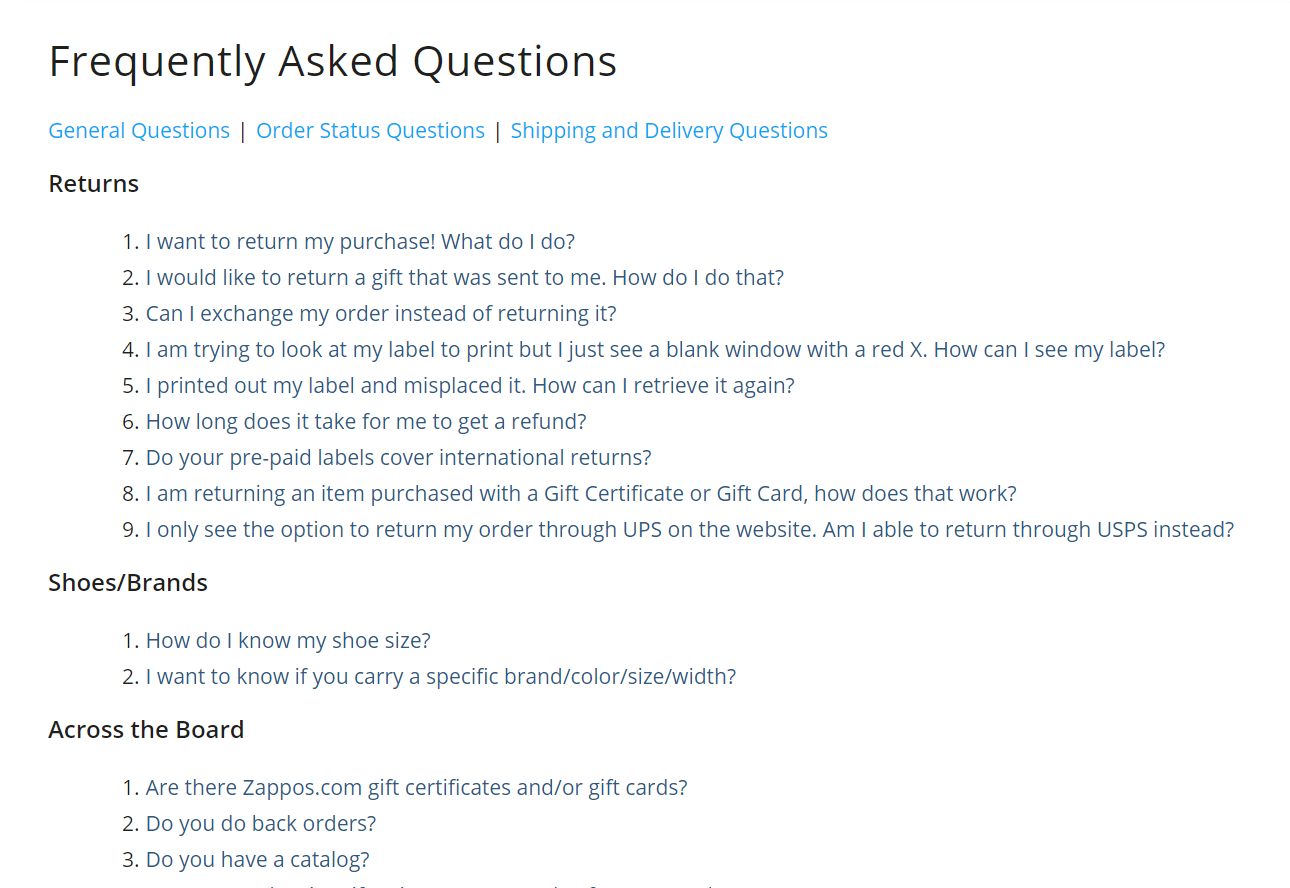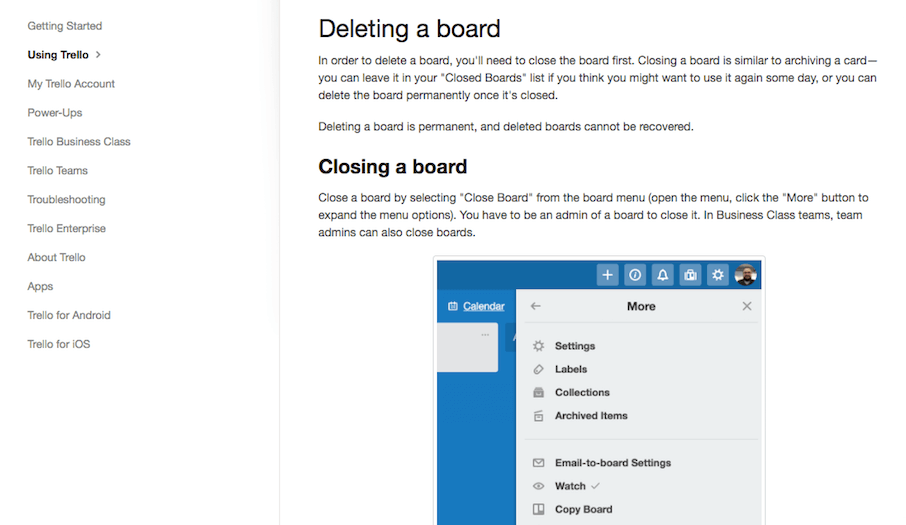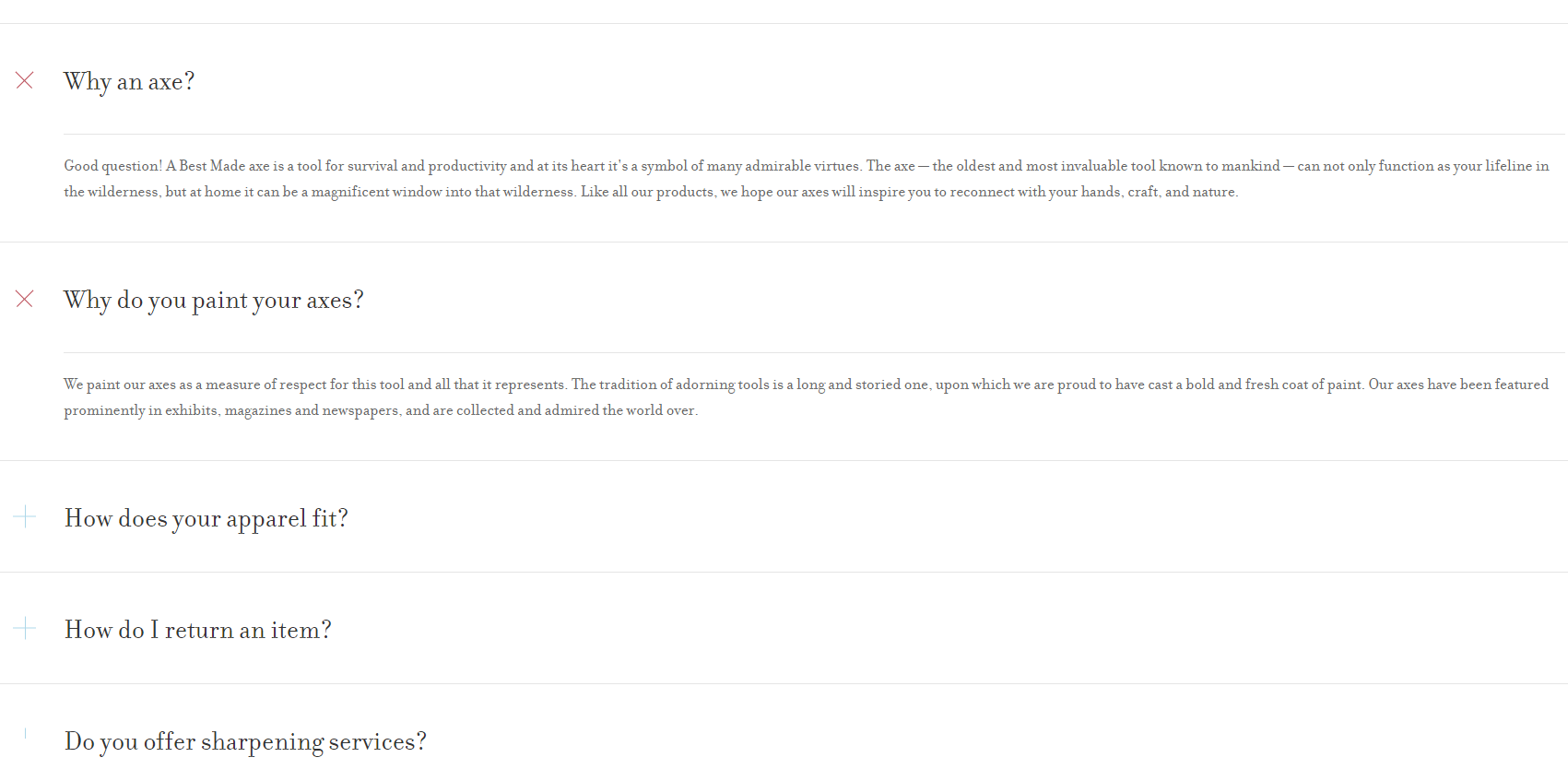How to Put Together an Effective FAQ Page (In 5 Steps)
If you run a business, you want your customers to be able to ask you for everything they need. However, repeat questions can burden your customer service phone and email lines, and slow down your response times. This can harm your business, since customers now expect responses faster than ever.
Fortunately, there’s an easy solution. A Frequently Asked Questions (FAQ) page is a collection of answers to your customers’ most common queries. It can alleviate the volume of customer service inquiries you receive, and enable you to improve your response rates. An FAQ page also gives customers what they want: instantaneous answers to their questions.
This article will explain the importance of having an FAQ page on your website, and go over everything you need to know in order to set up your own. Let’s get going!
Why Your Site Might Need an FAQ Page
In simplest terms, an FAQ page is a repository of answers to any questions you get over and over again. This page is crucial, because it enables customers to quickly find information for themselves:

This can not only improve your customer relationships, but also take some of the demand away from your overburdened customer service lines. In a ZenDesk survey, 69% of participants cited a quick response as the most important factor in having a positive customer service experience. Response times like that can be hard to achieve if you’re fielding every basic question by hand.
FAQs also create a quick and easy way for your staff to answer questions. They can direct customers to the FAQ page, or simply copy and paste the relevant section into a chat or email. FAQ pages can even boost your SEO by providing content that visitors want to see, and creating a natural way to use inbound links.
How to Put Together an Effective FAQ Page (In 5 Steps)
So, at this point you know why FAQ pages are crucial. But what should they include? Let’s go through the five steps required to create a strong FAQ page, starting with the basics.
Step 1: Gather Your Most Frequently Asked Questions
This step sounds fairly obvious. However, it’s important to make sure that the questions you include on your FAQ page match concerns customers actually have. Many people simply imagine what they think customers will want to know, which can result in an FAQ page that’s not very helpful.
Instead, you’ll want to gather real information on the kinds of queries your audience tends to have. You can start by quizzing your staff. Ask them what questions they are tired of answering, and what topics customers are most often confused about. In addition, checking through your support emails and/or records of prior customer service calls can be very enlightening.
If necessary, you’ll also want to organize your questions into overarching categories, such as “Ordering” or “Refunds.” This will help keep your FAQ under control if you end up with more than 10 or so questions.
Step 2: Write a Clear Answer for Each Question
The way you write your FAQ answers is crucial. You can think of your FAQ as kind of like an ‘answer bible’. You want these to be the default, go-to answers for every question on the list. That means you should really take your time in writing clear answers.
Above all, each answer should be concise, straightforward, and (of course) factually accurate. Aim to provide only the information someone will need to answer each question, and avoid the temptation to add in extra details or tangents.
For a great example of how to write strong answers, you can check out Trello’s FAQ page:

This page even uses screenshots and videos when necessary to illustrate answers. This type of multimedia approach can be very valuable to your audience.
Step 3: Use Clear Navigation
Once you have your questions and answers in place, you’re ready to start putting the actual page together. When you do so, remember that your FAQ section should be clear and easy to use. If it’s too complicated to navigate, customers may just give up and contact customer support anyway.
One strategy is to use collapsible windows to demarcate individual categories:

That way, customers can pop open the section they want, without having to scroll through a lot of questions they aren’t interested in. Many website platforms have tools available for this, such as WordPress’ Collapse-O-Matic plugin.
Another option is using ‘jump to’ links. You can list all the questions and/or categories at the top of the page, and let people quickly jump to the answers by clicking on each one. In WordPress, you can add ‘jump to’ links in the text editor, and the same holds true for any platform that enables you to enter custom code.
Finally, you can also use separate linked pages for your FAQ. You can do this by simply creating individual pages for each question or category, and then linking to all of them from a central location, such as an FAQ home page.
Step 4: Place the Page Prominently on Your Site
Page placement is another important step. No matter how strong your FAQ page is, it won’t matter if visitors can’t find it. Therefore, make sure that you place the page prominently in your site’s menu, sidebar, or footer area:

You may also want to include a link on your site’s contact page, reminding visitors to check and see if their question is in the FAQ before contacting your support team directly. That way, when customers go to contact customer service with a problem, they’ll be able to easily view answers to their most likely questions. This can help cut down on the volume of your support tickets, enabling you to focus on the truly unique cases.
Step 5: Adjust Your FAQ as Needed
Finally, don’t forget that your FAQ page should be a living, breathing thing (metaphorically speaking). A static FAQ page can quickly become out of date, and may not be as helpful to your audience as you might like.
Make sure that you update the page periodically, checking to ensure that all the answers within are still accurate and all the questions remain relevant. You don’t want to the page to end up cluttered with answers to queries about discontinued products or services, for example.
In addition, you may want to evaluate your answers from time to time, and rewrite them to be clearer if necessary. Again, collaboration with your support team will be helpful here. If they’re still getting asked about a question that’s addressed on your FAQ page, this can be a sign that the answer isn’t making sense to your audience.
With a little dedication and close attention to what your support team and customers are saying, your FAQ should grow stronger and more useful over time.
Conclusion
If you have an overburdened customer support team, and you’re receiving many of the same questions over and over again, you may need an FAQ page. This page can be a huge help in reducing the volume of inquiries you receive, and giving customers what they want: an instant answer to their questions.
The key steps to creating a strong, effective FAQ page include:
- Gathering your most common questions from your email, staff, and customer support lines.
- Writing the answers using clear, easy-to-understand language.
- Organizing the questions on a page with clear navigation.
- Placing the page somewhere visible on your site.
- Continuing to adjust your questions and answers as necessary.
Image credit: Pxhere.
